16 Key Healthcare Technology Trends
- Updated: Nov 14, 2024
- 8 min
The healthcare industry is experiencing a digital transformation, where technology is critical in shaping patient care, medical research, and health administration.
As we move closer to 2025, emerging healthcare technology trends are set to make healthcare more accessible, personalized, and efficient.
Our article will showcase the top 16 trends in healthcare technology that are improving patient outcomes and redefining the future of healthcare.
The app development landscape is evolving. Explore the most important application development trends for your business.
Bring your app idea to life with our expert software developers — contact us today to get started!
Top Healthcare Technology Statistics for 2025
- There are over 10 million mobile health apps available for download worldwide.
- The global mobile health app market is expected to reach $102.35 billion in 2025.
- By 2025, one in every three adults in America is expected to wear a fitness tracker.
- Telehealth services have increased by over 50% since the start of 2020, reflecting a significant shift in how healthcare is delivered, largely due to the COVID-19 pandemic.
- 68% of patients say they are more likely to choose medical providers that can book, change, or cancel appointments online.
- The surgical robot market is expected to reach over $24 billion by 2025.
1. AI in Healthcare

The healthcare industry in the US is seeing a remarkable transformation with the integration of Artificial Intelligence (AI) technology. AI can be a complex field, but understanding the basics is easier with our comprehensive AI glossary.
AI-powered medical applications enable personalized medicine, faster diagnostics, and predictive analytics that revolutionize patient care and operational efficiency.
By the end of 2025, the healthcare market for AI is projected to exceed $28.2 billion, indicating its growing significance in the field.
With AI algorithms analyzing vast datasets, diagnosing diseases like cancer has become faster and more accurate than traditional methods. AI-powered consultations are also enhancing patient engagement and care continuity in telemedicine.
Learn more about how AI and healthcare are shaping the future.
2. Telehealth Adoption
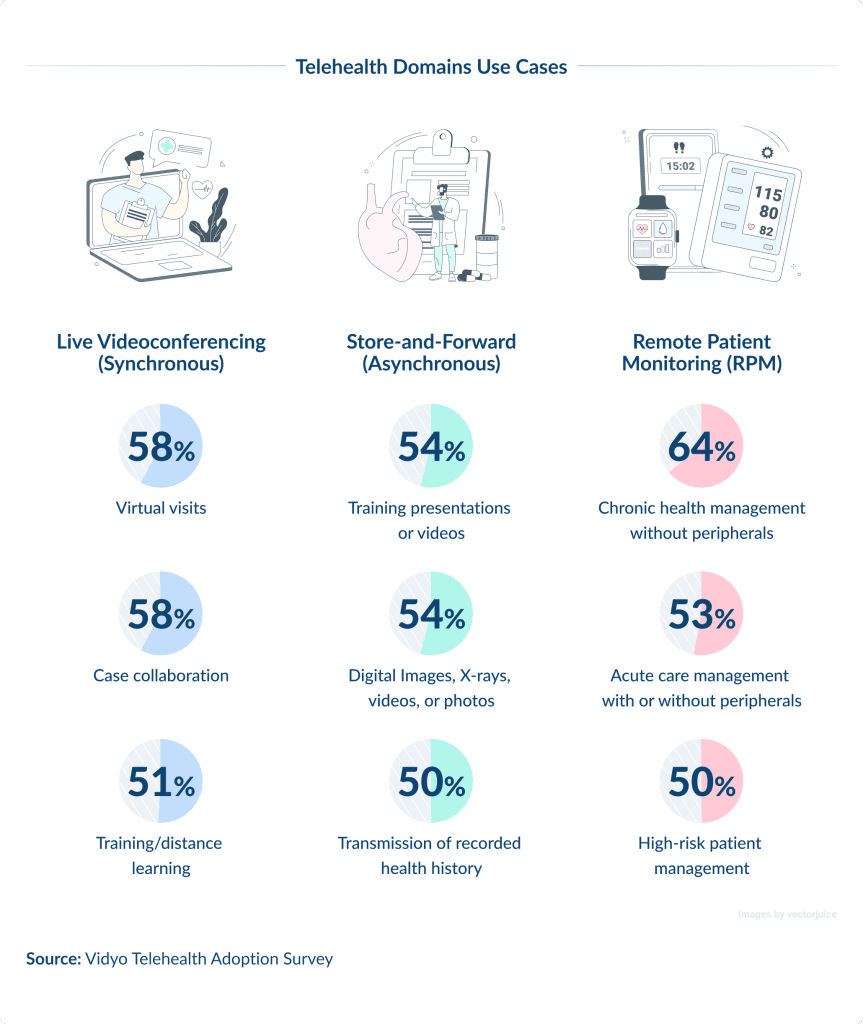
The use of telehealth has grown significantly, especially due to the COVID-19 pandemic, which has made remote healthcare services a necessity.
The global telehealth market is predicted to exceed $175 billion by 2026.
The growth in telehealth is attributed to several factors, including better access to healthcare for rural and underserved communities, reduced healthcare costs, and improved patient convenience.
Telehealth includes various technologies, from video consultations to mobile health applications, which allow patients to access healthcare without having to physically visit a healthcare facility.
Partner with SPDLoad to improve how you deliver patient care.
3. mHealth Apps
Mobile health (mHealth) apps have become a game-changer in personal healthcare management.
With over 350,000 apps available in major app stores as of 2025 (and counting), these apps offer fitness tracking, medication reminders, and mental health support services.
The global mHealth market is expected to grow to approximately $247 billion by 2025, which is a testament to its popularity.
These apps represent a shift towards patient-centered healthcare, allowing individuals to monitor their health conditions and access medical information directly from their smartphones.
Fitness apps are booming — learn the steps to make your fitness app and succeed in this growing market. Explore these ideas for fitness apps and start building.
4. Remote Patient Monitoring
Remote Patient Monitoring (RPM) is a cutting-edge approach that uses digital technologies to keep track of a patient’s medical and other health data from one location.
This information is then securely transmitted to healthcare providers in a different location.
RPM is particularly useful when managing long-term health conditions, like diabetes and heart disease, as it allows for continuous monitoring without frequent office visits.
The RPM market is projected to grow significantly in the coming years, with a predicted value of over $71.6 billion by 2027.
This growth is driven by advancements in wearable technologies and an increased demand for personalized healthcare.
If you are thinking about developing an EMR, feel free to discover all about EMR systems development and its key components in our guide.
5. Big Data Analytics

Big Data Analytics is changing how health data is analyzed and utilized, leading to better patient outcomes, improved efficiencies, and personalized healthcare.
The healthcare data analytics market is expected to reach over $85.9 billion by 2027, thanks to the vast amounts of health data being generated from electronic health records (EHRs), wearable devices, and genomic sequencing.
With this data, healthcare providers can identify patterns, predict health outcomes, and make data-driven decisions to optimize care delivery and reduce costs.
Learn more about its impact in our guide on healthcare data analytics.
6. Healthcare Robotics
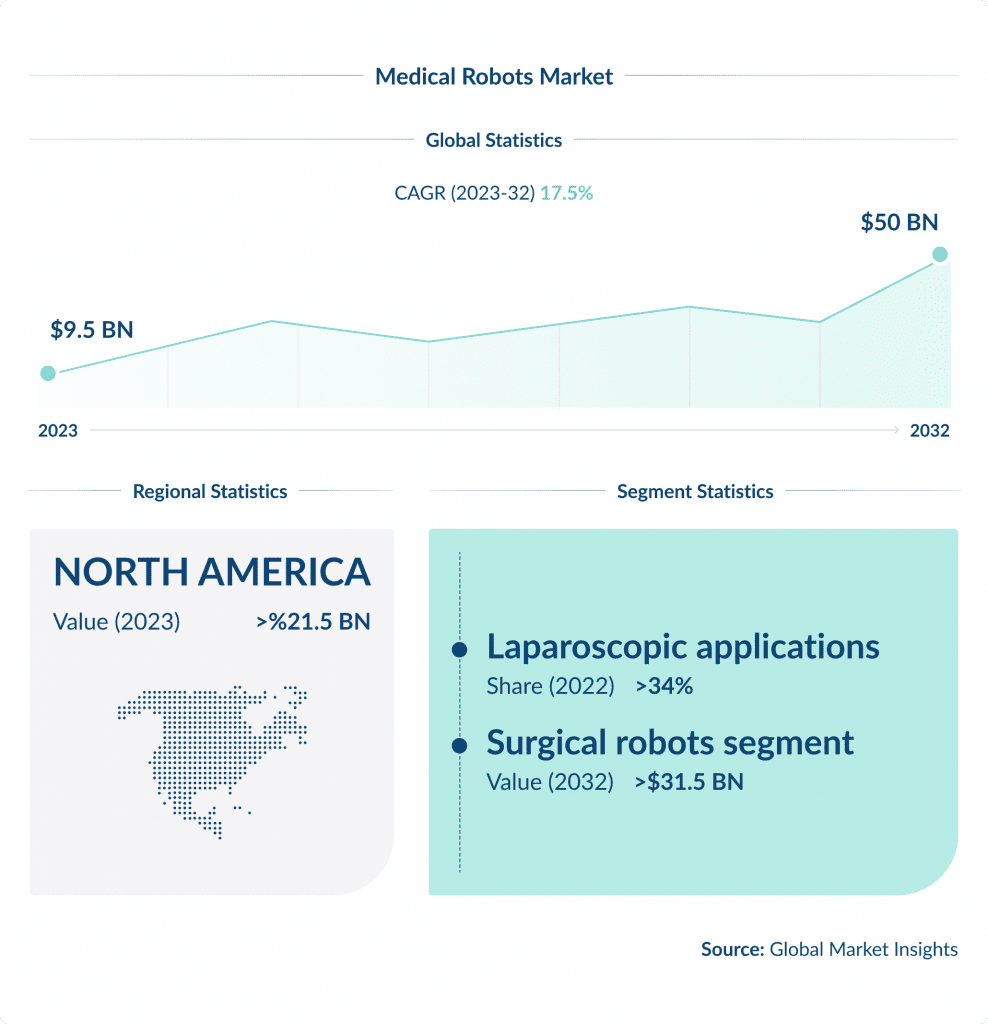
Healthcare robotics covers various applications, from surgical and rehabilitation robots to hospital logistics robots.
The healthcare robotics market is projected to exceed $20 billion by 2026.
These advanced technologies improve the accuracy of surgical procedures, enhance patient rehabilitation processes, and automate routine tasks, increasing hospital efficiency and safety.
Robotic support in surgery enables minimally invasive procedures, which can shorten recovery periods and reduce complications.
7. Blockchain for Healthcare
The world of healthcare is rapidly evolving, with new technological advancements making their way into the industry. One such technology that has gained a lot of attention is blockchain.
It offers a secure, decentralized platform for managing healthcare data, which can significantly improve data security, patient privacy, and interoperability across the healthcare ecosystem.
In fact, by 2025, the blockchain in the healthcare market is expected to grow to over $5.61 billion.
With its applications ranging from secure patient data exchange to pharmaceutical supply chain management, blockchain ensures transparency and traceability in the healthcare system.
Moreover, it facilitates secure and efficient patient data access, critical for better health data analytics and personalized care delivery.
8. Internet of Medical Things
IoMT is an innovative technology that connects medical devices and software applications to healthcare IT systems through online computer networks.
With devices like wearable fitness trackers and remote patient monitoring equipment, the IoMT is expected to have over 30 billion devices by 2026.
This technology helps improve healthcare delivery by enabling real-time health monitoring, increasing patient engagement, and facilitating personalized care.
The IoMT market’s rapid growth, projected to reach $29 billion by 2026, underscores its potential to revolutionize healthcare through improved data accuracy, accessibility, and actionable insights.
9. 3D Printing Medical Devices
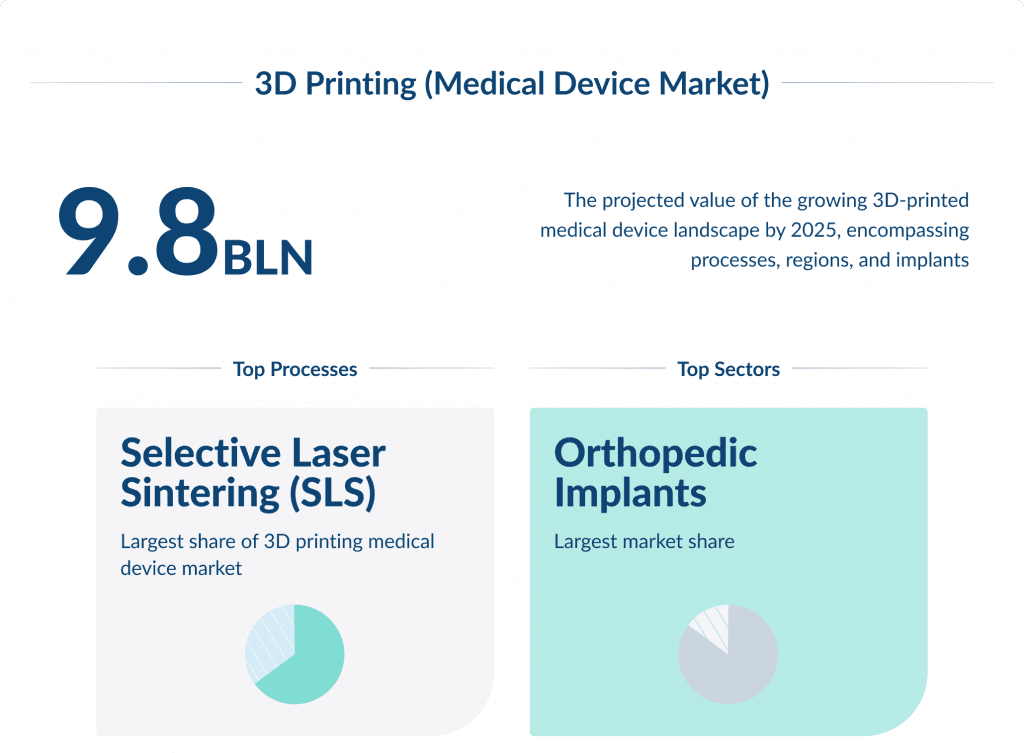
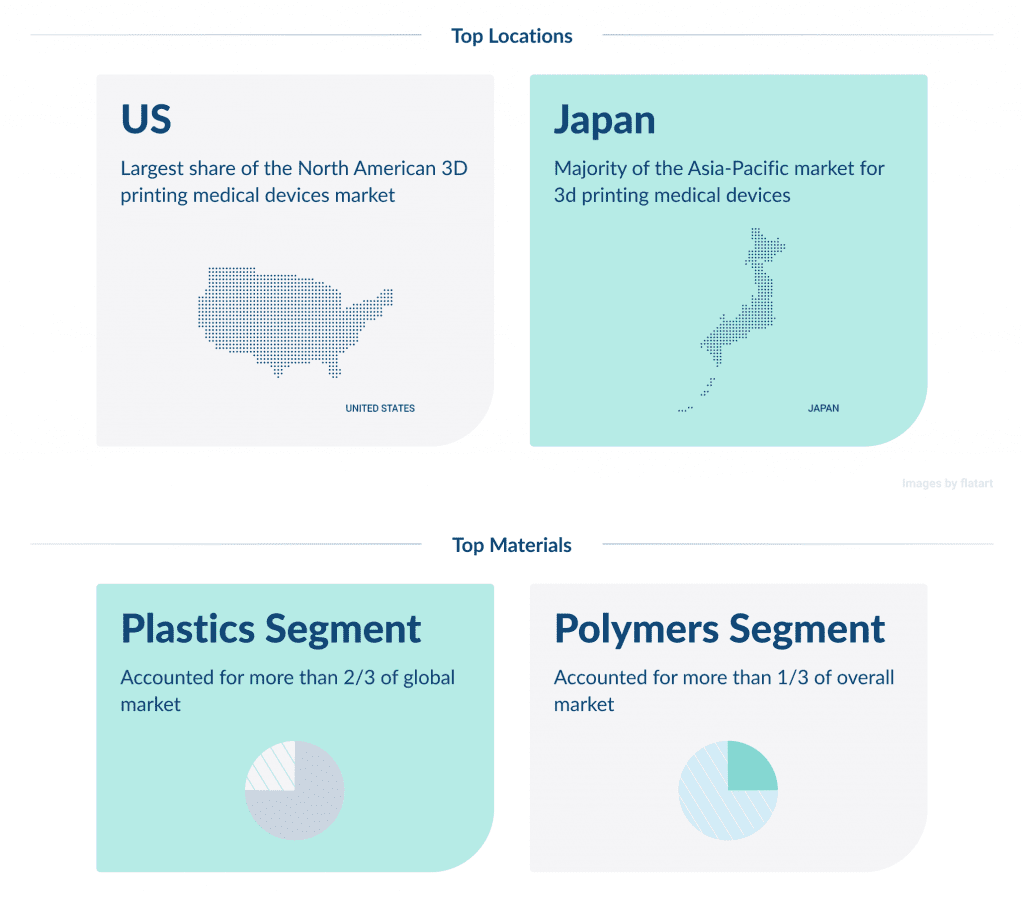
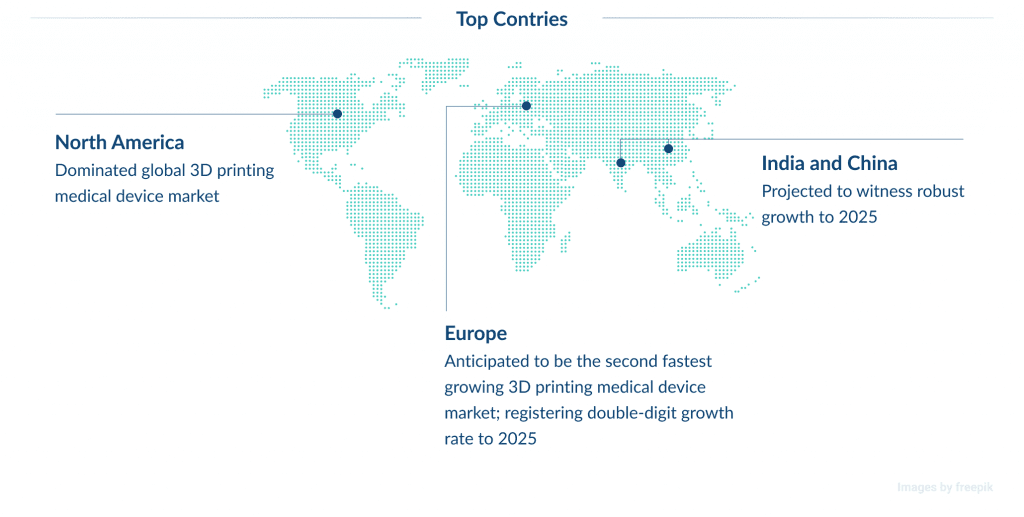
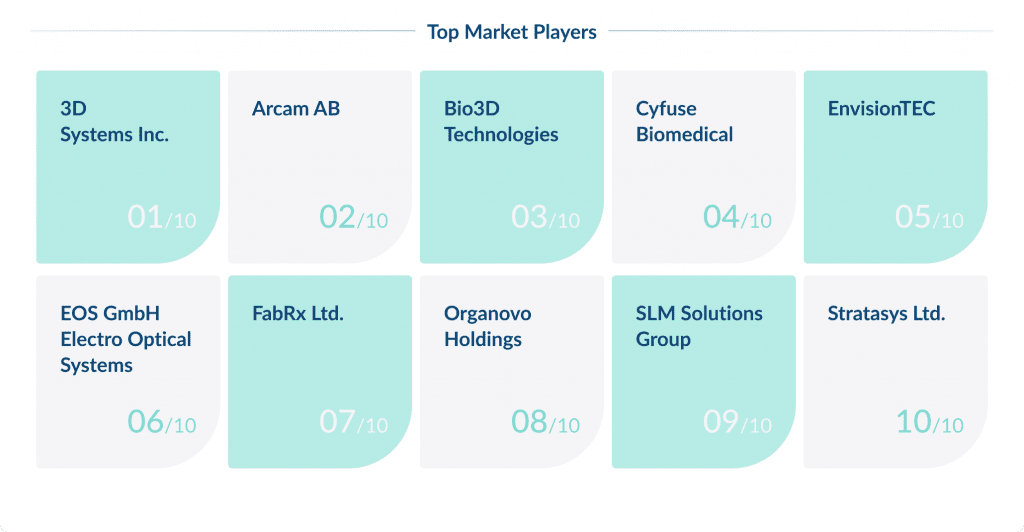
3D printing is revolutionizing the production of medical devices and prosthetics by providing customization to patient-specific needs and drastically reducing manufacturing time and costs.
The global market for 3D-printed medical devices is expected to exceed $4 billion by 2026, making it an increasingly popular choice for medical professionals and manufacturers.
3D printing enables the creation of complex medical devices, custom orthodontic implants, and even bioprinting of tissues and organs, making it a versatile and efficient solution for many healthcare needs.
With improved surgical outcomes and faster patient recovery times, 3D printing makes personalized medicine more accessible and affordable.
10. AR/VR in Healthcare
Augmented Reality (AR) and Virtual Reality (VR) technologies are transforming the healthcare industry.
These technologies transform healthcare education, surgical planning, and patient care with immersive experiences.
By 2025, the AR and VR in healthcare will be predicted to exceed $11 billion.
Medical students and professionals can now practice procedures in a risk-free virtual environment, thus enhancing their training.
AR and VR are also used as innovative tools for pain management, rehabilitation, and mental health treatments, resulting in improved patient outcomes and experiences.
Curious about the growth of augmented reality? Our AR statistics provide valuable insights.
11. Healthcare Cybersecurity
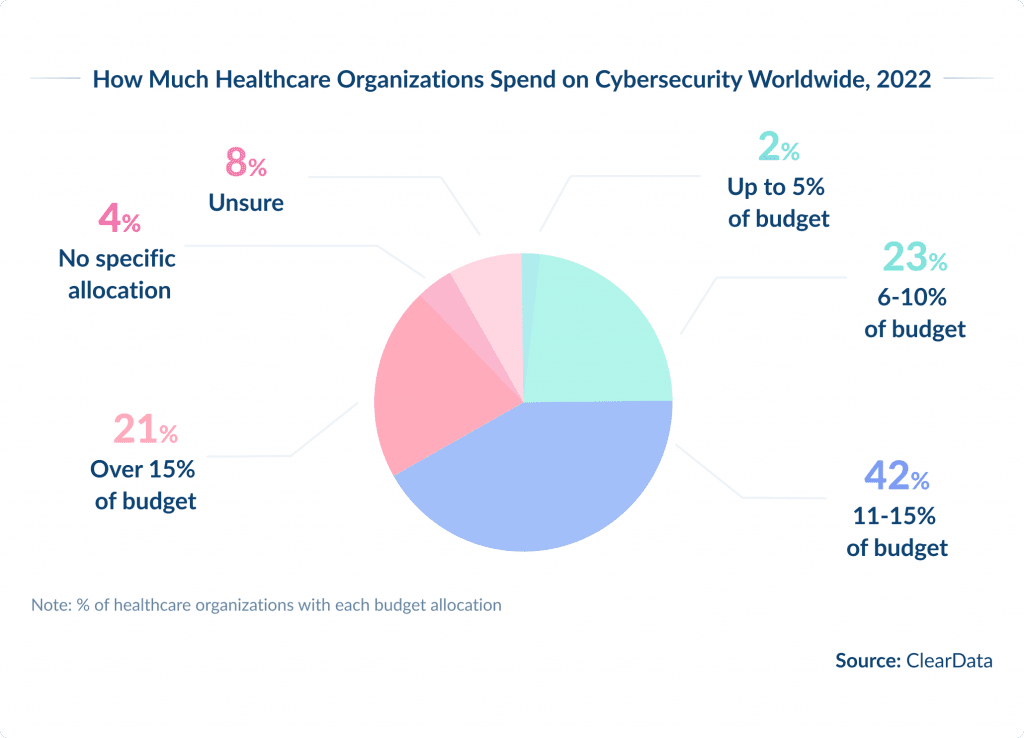
As healthcare records become increasingly digitized and more medical devices are connected to networks, cybersecurity has become a critical concern for the industry.
By 2025, the healthcare cybersecurity market is expected to exceed $125 billion.
To ensure compliance with data protection regulations and safeguard sensitive patient data from cyber threats, healthcare institutions are investing in advanced security measures.
These may include encryption, multi-factor authentication, and blockchain technology.
By leveraging these tools, healthcare providers can better protect against data breaches and maintain patient trust in the security of their information.
12. Cloud Computing
By choosing cloud-based app development, companies can ensure their applications are accessible and scalable.
Cloud computing is increasingly important in healthcare by providing on-demand and scalable access to computing resources and data storage.
Cloud technology is streamlining processes and improving patient outcomes by facilitating collaboration and data sharing across healthcare systems.
The healthcare cloud computing market is expected to grow to a whopping $55 billion by 2025, thanks to its many benefits, such as support for telehealth, EHRs, and big data analytics.
Cloud platforms are also cost-effective, flexible, and efficient, making managing large volumes of health data easier.
Overall, cloud computing enhances operational efficiency, improves data interoperability, and enables real-time access to patient information, resulting in better care delivery and outcomes.
13. Precision Medicine
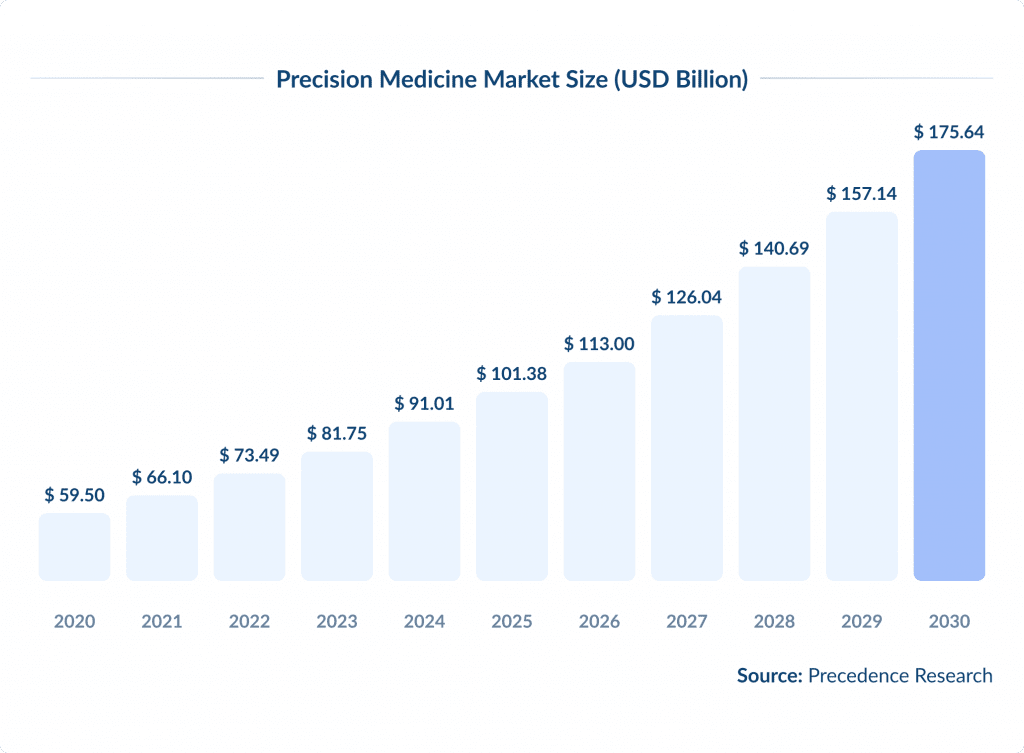
Precision medicine is a rapidly developing approach that customizes medical treatment to fit the unique characteristics of each patient, such as their genetics, lifestyle, and environment.
The precision medicine market is predicted to experience substantial growth, potentially reaching over $175 billion by 2030.
This method relies heavily on big data analytics and genetic sequencing to identify personalized treatment plans, which can enhance the efficacy of treatments and minimize side effects.
In oncology, precision medicine has proven particularly effective, as targeted therapies have significantly improved patient survival rates.
Empower your practice with custom EHR/EMR solutions tailored just for you.
14. Nanotechnology
Nanotechnology has revolutionized the healthcare industry by introducing nanoparticles and nano-sized devices for diagnosis, drug delivery, and disease treatment at a molecular level.
By 2028, the global nanotechnology market in healthcare is expected to exceed $613 billion.
By enabling targeted drug delivery, nanotechnology improves the therapeutic index of medications, minimizing side effects.
In addition, it offers high sensitivity for early disease detection by developing advanced diagnostic tools.
15. Wearable Health Tech
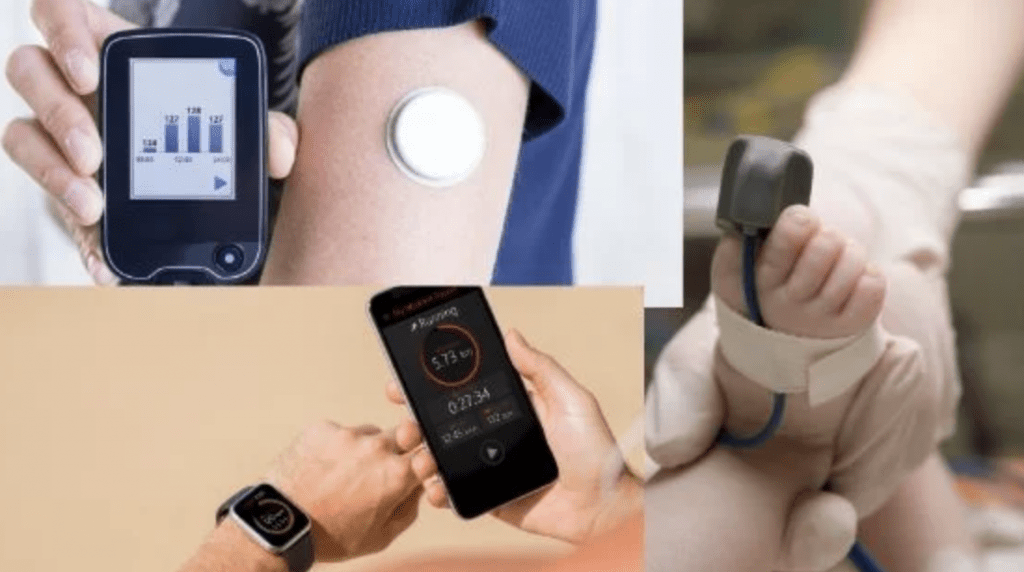
Wearable health technology has become an essential component of modern healthcare.
This technology includes devices like fitness trackers, smartwatches, and health monitors that promote wellness and enable remote patient monitoring.
The wearable healthcare devices market is projected to surpass $69 billion by 2028.
These devices collect important health data in real time, such as physical activity, heart rate, sleep patterns, and more.
By providing insights into their health, individuals can take control of their well-being, while doctors can remotely monitor their patients’ health.
Innovation is the key to leadership. Here’s how to win the technology race in the healthcare industry.
16. In-Home Healthcare
In-home healthcare services are on the rise, thanks to the support of technological advancements.
Patients can now receive professional medical care in the comfort of their own homes.
The global in-home healthcare market is projected to reach $390 billion by 2025.
An aging population drives this trend, a preference for home-based care, and technological innovations in telehealth and remote patient monitoring.
In-home healthcare technologies ensure continuous care for chronic conditions, post-operative care, and elderly care, improving patient satisfaction and reducing hospital readmission rates.
Explore the potential of healthcare app ideas to make a meaningful impact in healthcare.
Conclusion
Healthcare technology is transforming the sector, improving patient care and operational efficiency.
Healthcare providers and technology developers need to implement IT trends thoughtfully, ensuring tangible patient benefits while addressing concerns about privacy and fairness.
The future of healthcare technology is bright, and it has the potential to significantly impact how care is delivered and experienced.
Discover emerging EHR startups that are setting new standards for digital health records.
Good design can make all the difference. Check out our step-by-step guide on healthcare app design.












